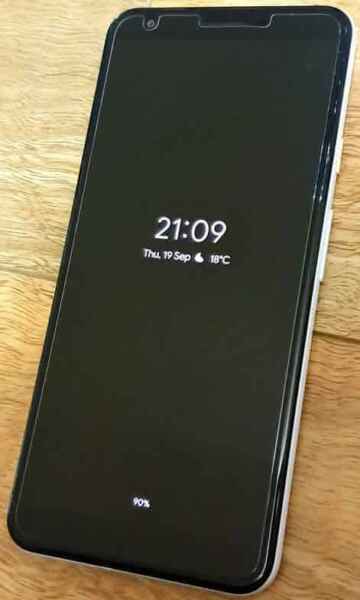Elevate your Android experience with Always-On Display (AOD), a feature that keeps essential information like the time, date, and notifications visible on your screen even when it’s locked. AOD not only adds a touch of elegance to your device but also enhances usability and convenience.
Unveiling the Benefits of Always-On Display:
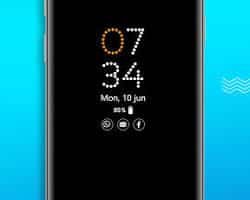
- Glanceable Notifications: Stay informed at a glance without unlocking your phone. AOD seamlessly displays notifications, allowing you to quickly check for important updates without disrupting your flow.
- Live Clock: Keep track of time effortlessly. AOD prominently displays the clock, ensuring you always have easy access to the current time, even when your device is at rest.
- Enhanced Usability: AOD eliminates the need to constantly wake your device to check notifications or the time. This simple feature streamlines your interaction with your phone, saving you time and effort.
How to Turn on Always-on display?
Enabling AOD is a straightforward process that varies slightly depending on your Android device manufacturer. Here’s a general guide:
- Open Settings and touch on Lock Screen
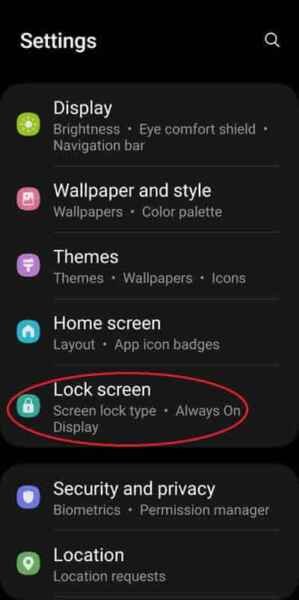
- Scroll down and touch to open Always-on Display
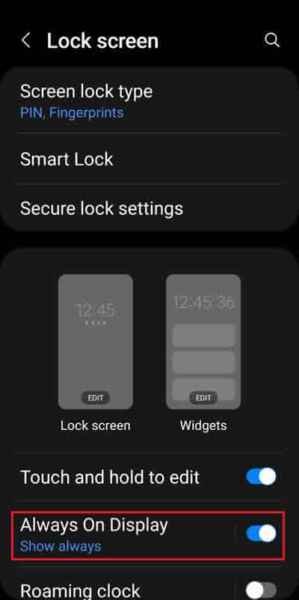
- On this screen, you specify how you the display to function.
- You can select
- Tap to show – which will only show the time when you tap the screen
- Show always – which will always display the time
- Show as scheduled – where you set a time schedule for when the Always-on time is displayed
- Show for new notifications – which will cause the time to only show when there is a new notification
- You can select which style of clock to display,
- You select if you want music information to be displayed, finally
- You select if you want the display to show in Portrait or Landscape mode.
- You can select
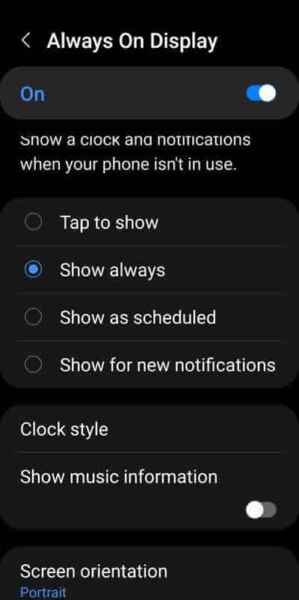
Optimizing AOD for Battery Life:
While AOD offers convenience, it’s essential to consider its impact on battery life. Here are some tips to optimize AOD for extended battery performance:
- Reduce Brightness: Lower the AOD brightness to minimize power consumption.
- Limit Displayed Content: Choose a minimal AOD style that displays only essential information.
- Schedule AOD Activation: Set AOD to activate only during specific times or when your device is charging.
Common problems and solutions for using Always-On Display (AOD) on Android:
Problem: Always-On Display is not working.
Solution:
- Restart your Android phone: This can often fix minor glitches that may be preventing AOD from working.
- Check if Do Not Disturb is off: Do Not Disturb can override AOD settings. Make sure Do Not Disturb is turned off.
- Ensure AOD is enabled: Check the AOD settings to ensure it is enabled. The exact location of this setting may vary depending on your device.
- Verify battery optimization: Battery optimization may be disabling AOD to conserve battery life. Check the battery optimization settings and ensure AOD is not being optimized.
- Clear AOD cache: Sometimes, corrupted cache data can cause AOD to malfunction. Try clearing the AOD cache from the Settings app.
- Update your Android device: Outdated software can lead to bugs that affect AOD. Make sure your device is running the latest Android version.
Problem: Always-On Display is draining my battery too quickly.
Solution:
- Reduce AOD brightness: The brightness of AOD is a significant factor in battery consumption. Try lowering the brightness level.
- Limit displayed content: Choose a minimal AOD style that displays only essential information, such as the clock. Disable unnecessary notifications or music controls.
- Schedule AOD activation: Set AOD to activate only during specific times, such as during the day or when your device is charging.
- Consider using a darker wallpaper: A darker wallpaper can reduce the power consumption of AOD.
- Turn off AOD when not in use: If you don’t need AOD constantly, consider turning it off manually when you’re not using it.
Problem: AOD is not displaying notifications correctly.
Solution:
- Check notification settings: Ensure that notifications are enabled for the apps you want to see on AOD.
- Verify app permissions: Grant necessary permissions to the apps you want to receive notifications for on AOD.
- Restart the notification app: Sometimes, a restart can fix minor glitches that may be affecting notifications.
- Update app and Android software: Outdated apps or Android versions can cause compatibility issues with AOD notifications. Ensure you have the latest updates.
- Reset app preferences: If the issue persists, try resetting app preferences to restore default notification settings.
Frequently Asked Questions (FAQs) and Answers for using Always-On Display (AOD) on Android:
Q: What is Always-On Display (AOD)?
A: Always-On Display is a feature on Android devices that allows the screen to remain partially on even when the device is not in use. This allows you to see essential information, such as the time, date, and notifications, at a glance without having to unlock your device.
Q: What are the benefits of using Always-On Display?
A: There are several benefits to using Always-On Display, including:
- Convenience: You can quickly check the time, date, and notifications without having to unlock your device.
- Usability: AOD can eliminate the need to constantly wake your device to check for notifications or the time.
- Elegance: AOD can add a touch of elegance to your device.
Q: How do I enable Always-On Display on my Android device?
A: The steps for enabling Always-On Display vary depending on your device manufacturer. However, the general process is as follows:
- Open the Settings app on your Android device.
- Navigate to the “Display” or “Lock screen” settings menu.
- Find the “Always-On Display” option and toggle it on.
- Explore the customization options to personalize your AOD.
Q: How do I customize Always-On Display?
A: The customization options for Always-On Display vary depending on your device manufacturer. However, common customization options include:
- Clock styles: Choose different clock styles for AOD.
- Notifications: Specify which notifications you want to see on AOD.
- Music controls: Enable music controls on AOD.
- Colors: Choose different colors for the AOD elements.
Q: How do I optimize Always-On Display for battery life?
A: While AOD offers convenience, it’s essential to consider its impact on battery life. Here are some tips to optimize AOD for extended battery performance:
- Reduce brightness: Lower the AOD brightness to minimize power consumption.
- Limit displayed content: Choose a minimal AOD style that displays only essential information.
- Schedule AOD activation: Set AOD to activate only during specific times or when your device is charging.
- Consider using a darker wallpaper: A darker wallpaper can reduce the power consumption of AOD.
- Turn off AOD when not in use: If you don’t need AOD constantly, consider turning it off manually when you’re not using it.
Q: What are some common problems with Always-On Display and how do I fix them?
A: Some common problems with Always-On Display include:
- AOD is not working: Restart your device, check Do Not Disturb settings, ensure AOD is enabled, verify battery optimization, clear AOD cache, update your device.
- AOD is draining my battery too quickly: Reduce AOD brightness, limit displayed content, schedule AOD activation, use a darker wallpaper, turn off AOD when not in use.
- AOD is not displaying notifications correctly: Check notification settings, verify app permissions, restart the notification app, update app and Android software, reset app preferences.
Embrace the Convenience of Always-On Display:
Incorporate Always-On Display into your Android experience and enjoy the benefits of enhanced accessibility, streamlined usability, and a touch of elegance. With its customizable options and battery optimization strategies, AOD seamlessly integrates into your device, making it a valuable addition to your everyday interactions.
